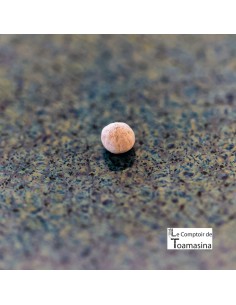Discover powdered ginger:
Its spicy flavor is highly appreciated in oriental cuisines (Thai, Chinese and Japanese), where it appears raw and grated, ideal to combine with sashimi (raw fish) and other fish and seafood.
It is also ideal if used in stir-fries and even mixed with soy sauce for seasoning meats and barbecues.
Another trick is to use the root to flavor drinks, such as traditional quantão, teas and fruit juices (try adding fresh ginger to watermelon juice).
The dry, powdered seasoning has a completely different use and flavor and is widely used in Indian recipes. This version also gives a lot of flavor to cakes and cookies.
Ginger is a spice to give an incredible flavor to your kitchen.
Discover the difference between young and old ginger:
Young ginger rhizomes are juicy and fleshy with a sweet taste. They are often pickled in vinegar or sherry as a snack or cooked as an ingredient in many dishes. They can be steeped in boiling water to make ginger tea, to which honey can be added. Ginger can be made into candy or ginger wine.
Ripe ginger rhizomes, old gingers are fibrous and almost dry. Ginger root juice is often used as a seasoning in Indian recipes and is a common ingredient in Chinese, Conscious, Japanese, Vietnamese and many South Asian cuisines to flavor dishes such as seafood, meat and vegetarian dishes.
Fresh ginger can replace ground ginger at a ratio of six to one, although the flavors of fresh and dried ginger are somewhat different.
Powdered dry ginger root is typically used as a flavoring for recipes such as gingerbread, cookies, crackers and cakes, ginger ale and ginger beer. Candied or crystallized ginger, known in the UK as "stem ginger", is the root cooked in sugar until soft, and is a type of confectionery. Fresh ginger can be peeled before eating. For longer term storage, ginger can be placed in a plastic bag and refrigerated or frozen.
Discover our recipe for candied ginger.
Did you know that Le Comptoir de Toamasina has been the specialist in the sale of vanilla beans and spices since 2010 and flavors of Brazil since 2017 such as acai powder.
Our powdered ginger with the characteristic flavor of fresh ginger, which was one of the essential spices in our kitchen.
It can be kept without any problem for many months.
Powdered ginger is used in the composition of salads, cookies, shortbread, cocktails and pastries.
Our ginger powder thanks to a selection contains the same notes as fresh ginger, very fragrant, slightly fruity and above all an incomparable spiciness.
Buy dehydrated ginger powder at Comptoir de Toamasina, the specialist in the world of vanilla and spices.
























